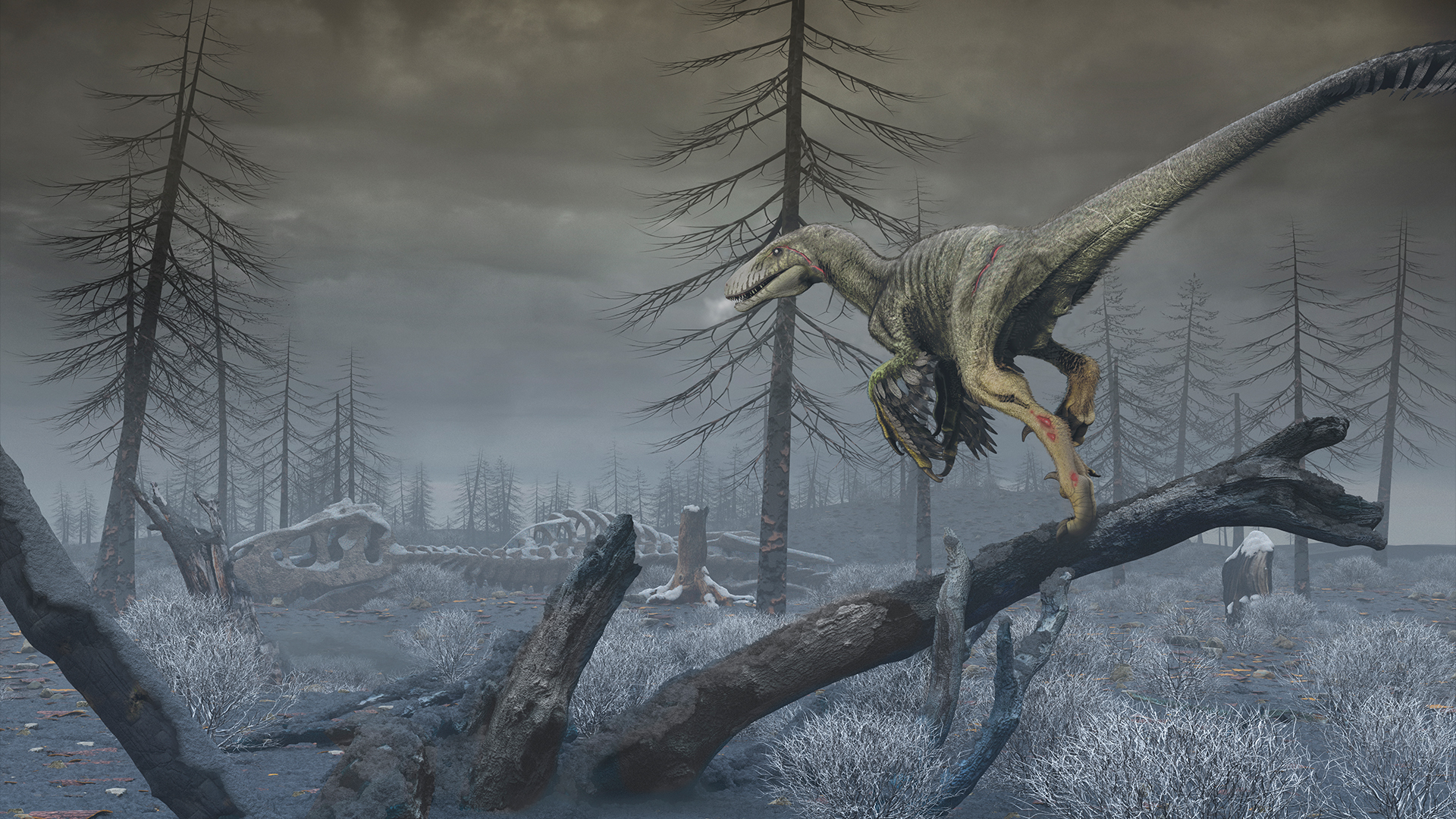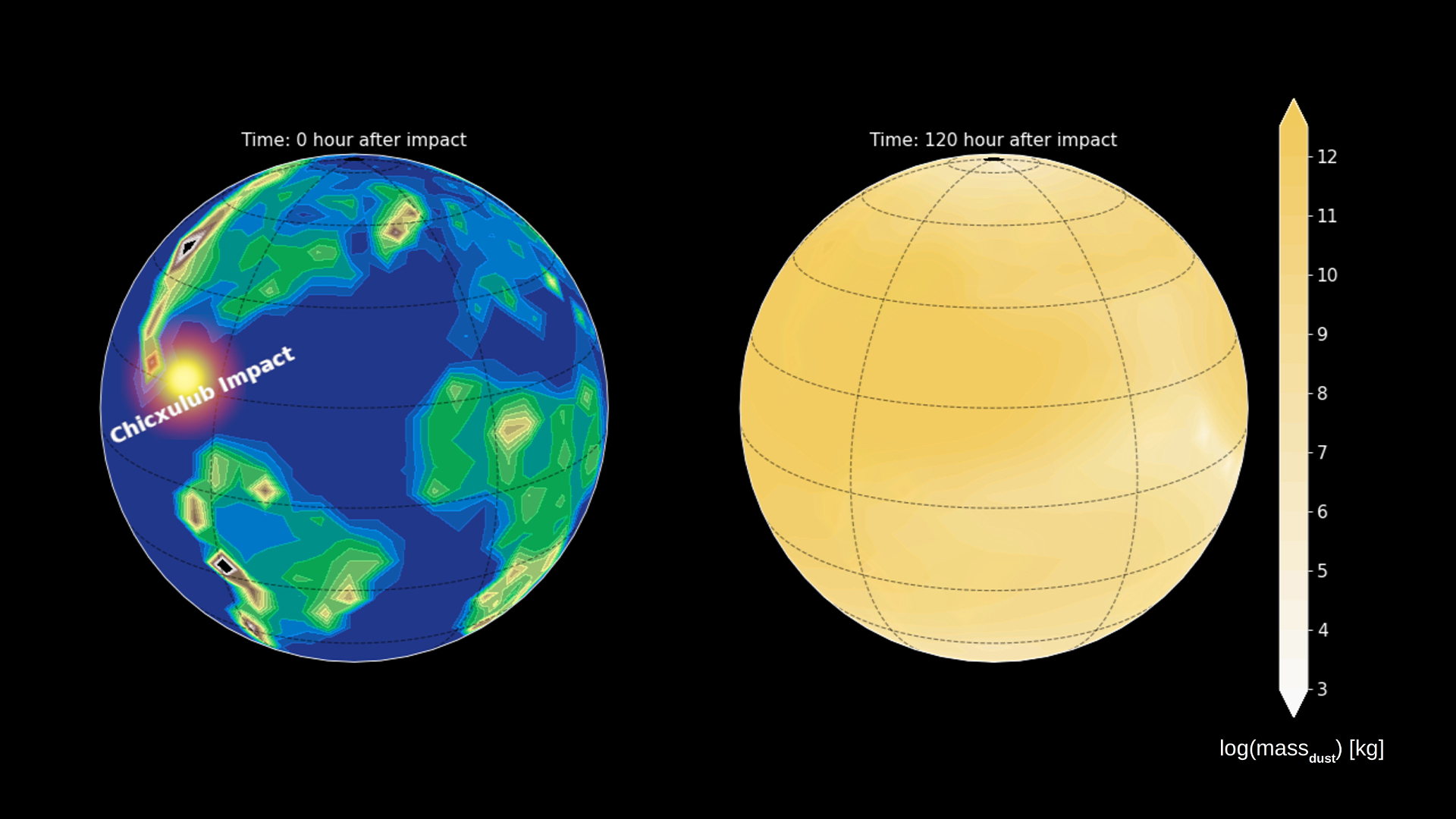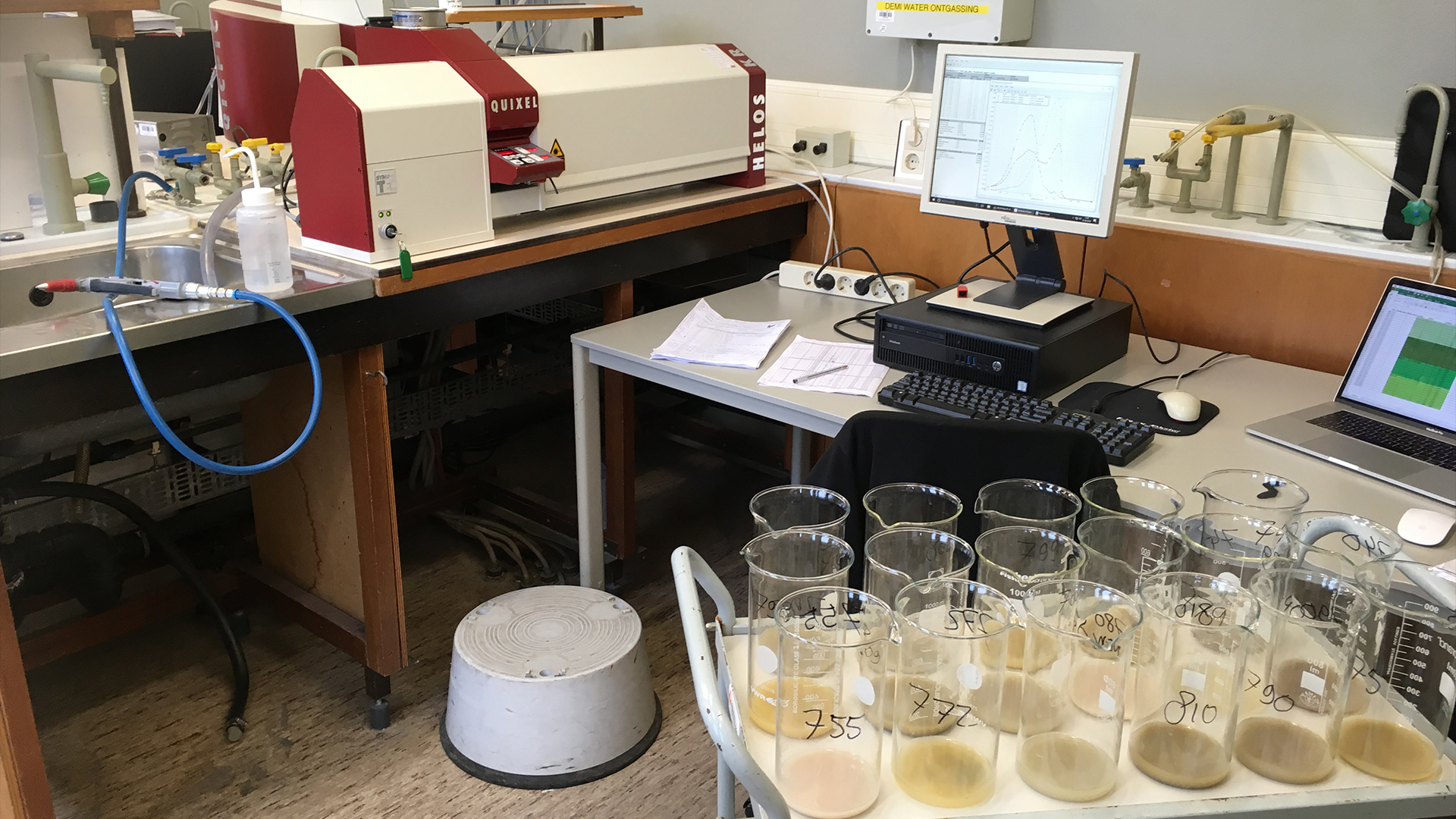Dust from the dino-killing impact ushered in years of global darkness
The Chicxulub impact threw sulfur gas, soot and dust into the air. New research finds that the dust may have been the most devastating.

About 66 million years ago, a city-size asteroid slammed into what is now the Yucatán Peninsula, ushering in a long period of darkness that snuffed out the nonavian dinosaurs. Researchers have long debated exactly what aspect of this event, known as the Chicxulub impact, caused the rapid change in climate. Was it sulfur particles from vaporized sedimentary rocks? Soot from subsequent global wildfires? Or dust from the very bedrock of the Yucatán?
Now, new research argues that dust was the deadliest aspect of the impact. While soot and sulfur contributed to global darkness and an impact winter that halted photosynthesis for nearly two years, fine dust from the granite pulverized in the impact remained aloft in the atmosphere for up to 15 years. The asteroid impact led to a spiral of extinctions that killed 75% of all species on the planet.

"We found out that the dust-induced disruption in photosynthetic activity is huge, much larger than what we anticipated before this research," study leader Cem Berk Senel, a postdoctoral researcher in planetary science at the Royal Observatory of Belgium, told Live Science.
The space rock that crashed into Earth at the end of the Cretaceous period (145 million to 66 million years ago) left behind a crater 110 miles (180 kilometers) wide and 12 miles (20 km) deep. The material that had been in that chasm rapidly entered the atmosphere. In the first couple of hours post-impact, partially melted sphericules of rock began to rain back down on the surface hundreds of miles from the impact.
Related: What happened when the dinosaur-killing asteroid slammed into Earth?

But there were finer particles, too. In the new study, published today (Oct. 30) in the journal Nature Geoscience, Senel and his colleagues used data from a site in North Dakota called Tanis, where a 4.3-foot-thick (1.3 meters) section of rock preserves a snapshot of the rain of debris post-impact. Researchers measured the sizes of the grains in this layer to determine what was thrown into the atmosphere by the collision. Then, they entered this information into a computer model of the global atmosphere.
The simulation suggested that within about a week, dust grains between about 0.8 and 8 micrometers in diameter had traveled around the globe, essentially blanketing the atmosphere. These particles are smaller than the diameter of a typical human hair. Today, the Environmental Protection Agency lists particles less than 10 micrometers in diameter as "inhalable particles" because they can easily end up in the lungs.
Sign up for the Live Science daily newsletter now
Get the world’s most fascinating discoveries delivered straight to your inbox.

The sudden blanketing of the atmosphere shut down photosynthesis on Earth within about two weeks, the researchers report. It did not return for 620 days (about 1.7 years), and it took at least four years for plants to begin photosynthesizing at a rate seen pre-impact. (About half of plant species went extinct after the Chicxulub impact, researchers estimate, but plants fared better than animals because their seeds could wait in dormancy for better conditions to re-sprout.) The longevity of the dust turned out to be disastrous for life: While sulfur particles started to fall out of the atmosphere within about 8.5 years, dust particles of this size could remain in the atmosphere for 15 years.
"The combined emissions of all these ejecta are resulting in surface temperature decline as much as 15 degrees Celsius [27 degrees Fahrenheit], which are mostly governed by the sulfur and the dust," Senel said.
The results are intriguing, said Clay Tabor, a paleoclimatologist at the University of Connecticut who was not involved in the study, and the dust size information from North Dakota will improve simulations of the post-impact climate.
But the study is unlikely to be the last word on whether soot, dust or sulfur particles were the biggest contributors to the end-Cretaceous mass extinction. Various studies use different climate models, which could affect the results, and differences between the models used could account for the disagreement among researchers about whether soot or dust made the biggest global impact, Tabor told Live Science.
"There are a lot of important processes that can affect aerosol optical properties and atmospheric lifetimes, but these processes can be difficult to accurately simulate, especially in the extreme case of the Chicxulub impact," he said.

Stephanie Pappas is a contributing writer for Live Science, covering topics ranging from geoscience to archaeology to the human brain and behavior. She was previously a senior writer for Live Science but is now a freelancer based in Denver, Colorado, and regularly contributes to Scientific American and The Monitor, the monthly magazine of the American Psychological Association. Stephanie received a bachelor's degree in psychology from the University of South Carolina and a graduate certificate in science communication from the University of California, Santa Cruz.










